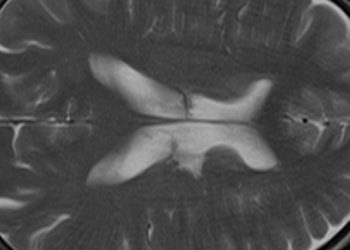2 Minute Medicine Rewind July 25, 2022
1. Patients under 18 years of age with sensorineural hearing loss (SNHL) had a higher odds of exposure to macrolides than penicillin, compared to those without SNHL.
2. For patients with SNHL, there was a higher odds of macrolide use compared to penicillin use in the period 181-365 days prior to SNHL diagnosis.
Evidence Rating Level: 3 (Average)
Macrolides are common antibiotics prescribed for children and young adults, with 50% of otitis media and 8-16% of respiratory infections managed with outpatient macrolides. However, some case reports and case series have identified associations between sensorineural hearing loss (SNHL) with macrolide use in adults, for those with comorbid conditions or receiving intravenous/high dosing. As well, a case series in children found a 7% prevalence of SNHL for long-term macrolide use in treating non-TB mycobacteria. Therefore, this current case-control study examined the odds of exposure to oral outpatient macrolide therapy, with penicillin therapy as the control exposure, for SNHL and non-SNHL patients 0-18 years of age. The study population consisted of 875 cases with SNHL and 875 controls without SNHL, matched 1:1 by age group, sex, and months since prescription. The mean (SD) age was 5.7 (4.9) years, and the most common duration of macrolide use was 5 days (79% of macrolide patients). The results showed that patients with SNHL had a higher odds of exposure to macrolides than penicillin, compared to those without SNHL (adjusted odds ratio 1.31, 95% CI 1.05-1.64). Additionally, there was no difference in odds of macrolide or penicillin exposure 0-180 days prior to SNHL diagnosis, but there was a significant difference when exposure occurred 181 to 365 days prior to SNHL diagnosis, with odds of macrolide exposure being higher (adjusted OR 1.79, 95% CI 1.23-2.60). Overall, this study demonstrated that further studies are needed to elucidate the association between macrolides and SNHL, as children and adolescents with SNHL had a higher odds of exposure to macrolides compared to penicillin.
1. For patients with one prior C-section, the induction of labour to delivery time was 10 hours quicker with controlled release dinoprostone induction compared to Foley catheter balloon induction.
2. No differences in maternal satisfaction were found for either method of labour induction.
Evidence Rating Level: 1 (Excellent)
For patients with a previous C-section delivery, labour induction is considered to be risky, due to higher rates of uterine scar rupture, 2.5% when induced with prostaglandins, 0.7% when induced with non-prostaglandins, and 0.5% when labour is spontaneous. However, labour induction is done in 27-32.7% of those who try for a vaginal birth after C-section (VBAC), and is accepted in high-resource settings with informed patient consent. For an unriped cervix, Foley catheter balloon and controlled release dinoprostone vaginal inserts are two methods of inducing labour, and a 2018 systematic review found no differences in safety or effectiveness for patients without a prior C-section. Therefore, this current randomized controlled trial compared the time to delivery and satisfaction outcomes for these two labour induction techniques, among patients with one prior C-section. The study population consisted of 78 women, with 39 randomized to each treatment group. Each participant had a Bishop Score of 5 or less, intact membranes, and no more than 2 contractions in 10 minutes. The results showed that the induction to delivery time was 10 hours longer in the Foley catheter group than the dinoprostone group, with a median [IQR] interval of 33.5 [26.1-36.2] and 23.5 [12.7-34.5] hours respectively (p = 0.004). As well, there were no differences in maternal satisfaction on the 100-point visual analog scale, with a median score of 80 [64-88] and 82 [67-88] for the Foley catheter and dinoprostone respectively. There were also no uterine ruptures in the trial (95% CI 0-5.6%). Overall, this study showed that for patients with one prior C-section, time to delivery following controlled release dinoprostone labour induction was significantly quicker compared to the use of a Foley catheter balloon, although no differences in satisfaction were found.
1. At 58 months follow-up, fewer patients with Brugada Syndrome (BrS) and associated paroxysmal atrial fibrillation (AF) achieved freedom from atrial tachyarrhythmias, following pulmonary vein isolation (PVI) catheter ablation, compared to non-BrS patients with paroxysmal AF.
2. Rates of freedom from AF were similar between BrS and non-BrS patients with a history of paroxysmal AF.
3. Rates of inappropriate shocks from implantable cardioverter-defibrillators (ICDs) were significantly lower following PVI catheter ablation, compared to prior.
Evidence Rating Level: 2 (Good)
Atrial fibrillation (AF) is the most frequent supraventricular arrhythmia that occurs in patients with Brugada syndrome (BrS), an inherited arrhythmia syndrome. Pharmacological treatment for AF in BrS patients is complex due to a risk of drug-related ventricular arrhythmias. Catheter ablation is an option, which for BrS patients involves pulmonary vein isolation (PVI), although the pathophysiology of the condition is unclear regarding whether pulmonary veins are an appropriate target. Therefore, this cohort study examined the long-term outcomes of PVI in BrS patients with paroxysmal AF compared to AF patients without BrS, including freedom from atrial tachyarrhythmias and prevalence of inappropriate shocks from implantable cardioverter-defibrillators (ICDs). The study population consisted of 60 BrS patients with paroxysmal AF, or AF that ceases within 7 days, either with treatment or spontaneously. Each patient underwent PVI between 2012 and 2019 and was propensity-matched to a participant without BrS or structural heart disease, but with symptomatic paroxysmal AF treated with PVI. Antiarrhythmic medications were discontinued 3 months following ablation. The study showed that after a mean follow-up of 58.2±31.7 months, more non-BrS patients achieved freedom from atrial tachyarrhythmias, with 61.7% of BrS patients compared to 78.3% of non-BrS patients (log-rank p = 0.047). However, rates of freedom from AF were similar, with 76.7% of BrS patients and 83.3% of non-BrS patients (log-rank p = 0.27). Additionally, ICD-inappropriate shocks were less prevalent after ablation, with 27.6% reporting inappropriate shocks prior to ablation, and 3.4% afterwards (p = 0.01). Overall, this study demonstrated that BrS patients with AF did have a lower long-term rate of freedom from atrial tachyarrhythmias following PVI, compared to non-BrS AF patients, but that AF freedom rates were similar.
1. The effectiveness of COVID-19 vaccines consistently waned over a 26-week period, although COVID-19 hospitalization and COVID-19 mortality were consistently and significantly higher amongst unvaccinated individuals.
Evidence Rating Level: 2 (Good)
Although antibody titres diminish over time following vaccination, studies examining the waning effectiveness of COVID-19 vaccines have led to varying conclusions on the extent of the waning. Additionally, studies evaluating this waning generally use a test negative case-control design, taking into account only those who seek out testing for COVID-19. Therefore, this study compared COVID-19 related hospital admission, COVID-19 mortality, and COVID-19 infection, amongst those fully vaccinated with the Pfizer-BioNTech mRNA vaccine (BNT162b), the Oxford-AstraZeneca (ChAdOx1) vaccine, and those who are unvaccinated. This study used the OpenSAFELY-TPP database, containing health data on 44% of the English population (24 million people). The study population consisted of fully vaccinated individuals who received their second dose during the 4-week period with the greatest number of second doses distributed, or individuals with no vaccin received at the start of this period. This included 1 951 866 individuals vaccinated with BNT162b2, 3 219 349 vaccinated with ChAdOx1, and 2 422 980 whom were unvaccinated. Overall, the study found that the effectiveness of vaccines was consistently waning for every 4-week period that passed, up to 26 weeks, as the ratios of adjusted hazards ratios were consistent over time. As well, there were consistently higher rates of COVID-19 hospital admission, COVID-19 mortality, and positive COVID-19 test, amongst those who were unvaccinated. The exception was that at 23-26 weeks, rates of positive COVID-19 tests for the fully vaccinated were similar to or greater than those who were unvaccinated, including adjusted HRs of 1.72 (95% CI 1.11-2.68) and 1.86 (95% CI 1.79-1.93) for BNT162b2 and ChAdOx1 respectively. At 23-26 weeks, adjusted HRs for COVID-19 hospital admission and COVID-19 death were ≤0.20 for the BNT162b2 group and ≤0.25 for the ChAdOx1 group. In conclusion, this study found that while vaccine effectiveness consistently waned over 26 weeks, rates of COVID-19 hospital admission and mortality were significantly lower amongst the fully vaccinated, despite similar rates of positive COVID-19 tests between 23 and 26 weeks.
1. Any exposure to opioid analgesics prenatally was not associated with differences in scholastic performance at the fifth-grade level, compared to those whose mothers had prepregnancy exposure only.
2. Prenatal exposure was associated with small decreases in test scores, for exposures in the first trimester and exposures in 2-3 four-week periods during pregnancy, compared to those whose mothers had prepregnancy exposure only.
Evidence Rating Level: 2 (Good)
While an estimated 3 to 22% of pregnant individuals use prescribed opioid analgesics, there is a lack of understanding about the neurodevelopmental implications of prenatal exposure. One prior study found that high cumulative exposures or exposures longer than 14 days increased the risk for neurodevelopmental disorders, with hazard ratios ranging from 1.22-1.70. The remaining three studies examining prenatal exposure to opioid analgesics found no associations with impaired language or communication skills, although an exposure of 5 weeks or longer was associated with a greater risk of ADHD diagnosis (HR 1.60). Therefore, this current cohort study examined whether any prenatal exposure, exposure timing, or exposure duration were associated with differences in scholastic skills at the fifth-grade level. The study population consisted of 64,256 children from 54,568 mothers, enrolled in a national birth registry between 2002 and 2008. The outcomes were scores from national standardized tests for mathematics, Norwegian literacy, and English language. The study found that 2.3% of pregnancies involved opioid analgesic use, and codeine with acetaminophen was the most common, reported by 90.5% of those with exposures. Of the students who were exempted from test-taking due to special needs, between 2.7% and 3.6% had exposures to opioid analgesics. Overall, children with any exposure did not score lower on any test, compared to children from mothers with only prepregnancy exposures. In terms of exposure timing, exposure in the first trimester was associated with lower literacy (weighted β -0.13, 95% CI -0.25 to -0.01) and lower numeracy (wβ -0.14, 95% CI -0.25 to -0.04) scores, compared to those from mothers with prepregnancy exposures only. Lastly, children of mothers who used opioid analgesics during 2-3 four-week periods in pregnancy had lower literacy (wβ -0.13, 95% CI -0.25 to -0.01) and lower numeracy (wβ -0.14, 95% CI -0.25 to -0.04) scores, compared to those from mothers with prepregnancy exposures only. No significantly lower scores were associated with second or third trimester exposures, or other exposure durations. In conclusion, exposure to opioid analgesics prenatally was associated with statistically significant, but small differences in fifth-grade test scores, for first trimester exposures and exposures in 2-3 four-week periods during pregnancy.
Image: PD
©2022 2 Minute Medicine, Inc. All rights reserved. No works may be reproduced without expressed written consent from 2 Minute Medicine, Inc. Inquire about licensing here. No article should be construed as medical advice and is not intended as such by the authors or by 2 Minute Medicine, Inc.







